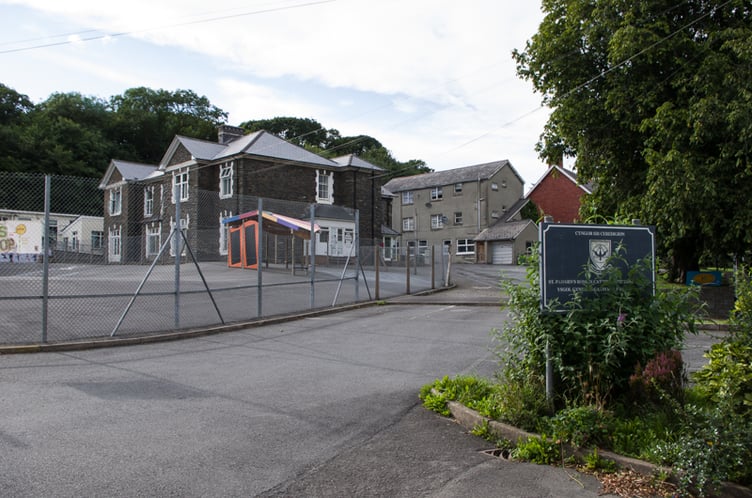A new school to replace St Padarn’s in Aberystwyth that is “need of improvement” is set to be built along with a new additional learning needs unit at Llwyn yr Eos as part a £10m nine year school improvement plan in Ceredigion.
Ceredigion County Council’s Cabinet signed off on the Strategic Outline Programme for school building projects over the next nine years at a meeting on 14 May.
The plan in the first three years will see a new bespoke facility built at Llwyn yr Eos school in Penparcau “to meet the increased need” for additional learning needs provision.
The existing Enfys Unit will also be refurbished, and a review of parking and drop off zones will also take place.
The first three years will also see the Ceredigion Pupil Referral Unit – currently provide on two sites –amalgamated onto one single site.
Years four to six of the plan will see a new Catholic school built for St Padarn’s, with Ceredigion council saying it is “need of improvement.”
As a Roman Catholic school, the “dependent upon the diocese contributing the required match funding,” a report said.
Headteacher Edith Brophy said in a letter to parents: “I am delighted that a new building, suitable for the delivery of the Curriculum for Wales, will be available for the future generations of our school pupils.”
Years four to six will also see the outcome of a Ceredigion council wish to overhaul sixth forms in the county onto fewer sites – possibly one – following a review.
Years seven to nine will see a “review of school places and Additional Learning Needs provision to ensure that the school infrastructure is resilient and sustainable.”
The total estimated cost of all the projects is £10,970,429, with Welsh Government contributing £8,416,474 and Ceredigion council putting up £2,553,954.
“The Strategic Outline Programme was presented to Welsh Government on the 31 March outlining the schemes that have been identified and prioritised for delivery for the next nine years as part of a rolling programme,” a report said.
“Projects included in years one, two and three are expected to reach full business case and be delivered within three years of approval.
“Projects included within years four, five and six are being developed and could be subject to a statutory consultation.
“Projects included in years seven, eight and nine will reflect the longer term project pipeline.”

.png?width=209&height=140&crop=209:145,smart&quality=75)



Comments
This article has no comments yet. Be the first to leave a comment.